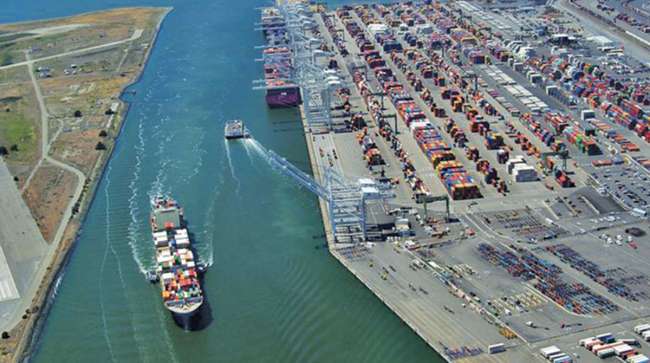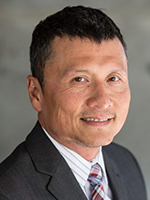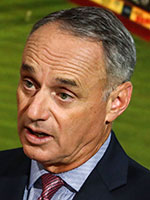Senior Reporter
Port of Oakland Turns to Agriculture to Replace Lost Cargo Volumes

[Stay on top of transportation news: Get TTNews in your inbox.]
Port of Oakland Executive Director Danny Wan says the port has embarked on a plan to play to its strength as one of the leading agriculture export facilities in the world to soften the impact of COVID challenges of the past three years.
In an exclusive interview with Transport Topics, Wan says the COVID-19 pandemic caused a number of shippers to begin skipping their regular stops at Oakland because it was more profitable to unload Oakland’s cargo at the ports of Los Angeles and Long Beach and have it trucked 370 miles north, while those ships headed back to Asia to get more cargo as rates soared in 2020, 2021 and 2022.
“Some of the shipping carriers have been skipping Oakland because they want to hurry back to Asia and pick up some more valuable imports that they’re getting a premium price on,” Wan said.
But the port is just a short drive from some of the richest agricultural basins in the world. Oakland also has a direct BNSF rail line connecting the port as far east as Chicago and running through several key Midwest states, including Iowa and Nebraska. Union Pacific also operates an extensive intermodal terminal there.

Wan
“The Biden administration, the port supply chain envoy Gen. [Stephen] Lyons, and the state of California have been very focused with the Port of Oakland on trying to solve this puzzle about how to get our exports out and regain the kind of service we had before the pandemic,” Wan said. “It might now be returning to normal. We are hoping to get some of those exports service calls back to Oakland as the volume of import levels begin to normalize.”
The port has taken what Wan says are several critical steps to improve exports, including the building of a 22-acre, agriculture-only, pop-up facility that was partially paid for by the U.S. Department of Agriculture.
“We are probably one of the top reefer ports in the country. A lot of proteins and refrigerated goods are shipped through Oakland,” Wan said. “We appreciate the attention. And one of the silver linings of what we just went through, including our export volume drop, is now we are really fully understanding where all the chokepoints are, when there is an unusual event in our supply chain. This gives us a very good knowledge base as to how to move forward.”
Want more news? Listen to today's daily briefing above or go here for more info
Wan says the port has recovered from the nearly weeklong shutdown earlier this summer when protesting truck drivers closed the facility, after the Supreme Court of the United States refused to take up the lawsuit involving California’s controversial Assembly Bill 5, which is redefining the employer-employee relationship. Many independent owner-operators say by refusing to review their lawsuit, the law will damage the work flexibility they are seeking in trucking.
“Well, the truckers certainly made their voices known,” Wan said. “We found out during that whole protest that there was very much a lack of information about how this affects you as a truck driver, as an independent business. California and the port are working very much together to try to get information out to folks as to how that law actually works, and what kind of assistance is out there for truckers.”
In addition to the federal and state money that’s coming to the ports, another change may be coming to Oakland in 2023, if the Oakland City Council and Major League Baseball’s Oakland A’s can come to agreement to build a new waterfront ballpark at the port’s largely abandoned Howard Terminal, along with a multibillion dollar real estate development. During the World Series MLB Commissioner Rob Manfred complained the process to get the Oakland project going is taking too long, expressing his frustration with the local leaders who are trying to get it approved.

Manfred
“I think the mayor in Oakland has made a huge effort to try and get it done in Oakland,” Manfred told a SiriusXM talk show host. “It just doesn’t look like it’s going to happen.”
When asked at the World Series about the stadium plans, Manfred said, “I’m done talking about Oakland.”
But this is not the first time Manfred has expressed his frustration about the pace of the project. The team’s lease at its current home, the aging Ring Central Coliseum, expires in 2024.
However, several members of the Oakland City Council and Wan believe the stadium will receive local approval and that their waterfront location is far more desirable than a stadium and a team competing for business with gamblers on the Las Vegas strip.
“We have a great plan for making sure that that development is compatible with the maritime uses, as well as the baseball park,” Wan said. “And by the way, there are plans for 3,000 units of housing on that site.”
While Manfred and others are pessimistic, A’s Executive Vice President for Baseball Operations Billy Beane said recently he is optimistic a new stadium will be built in Oakland.

